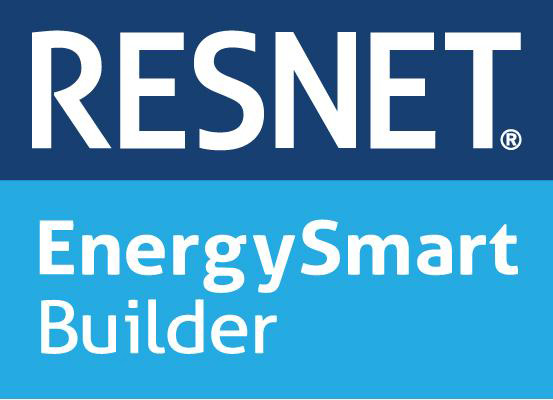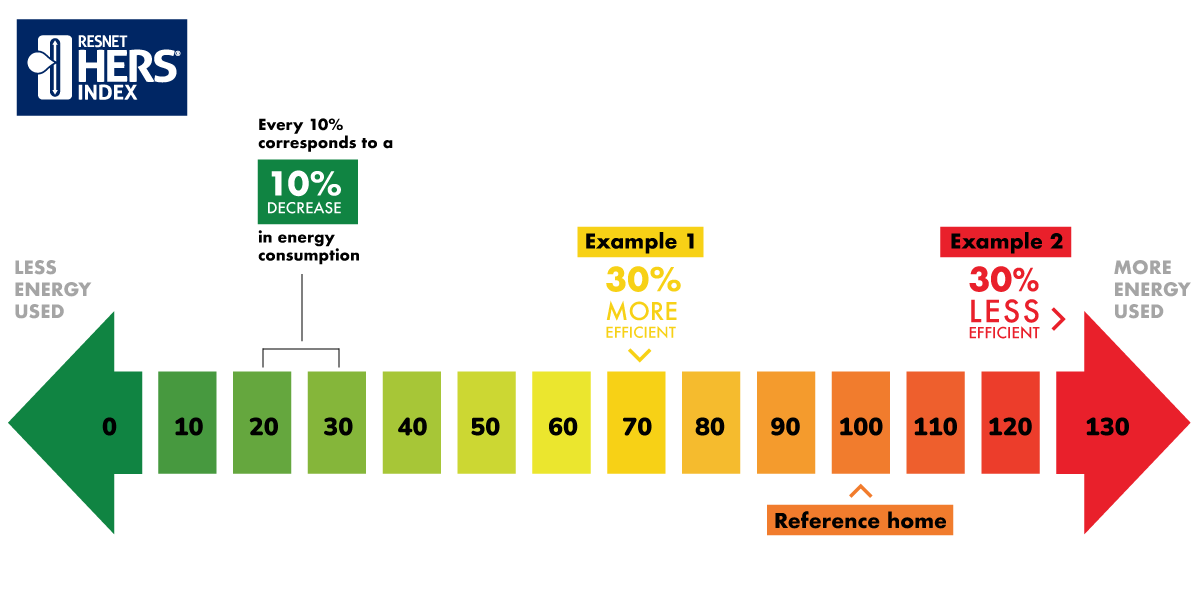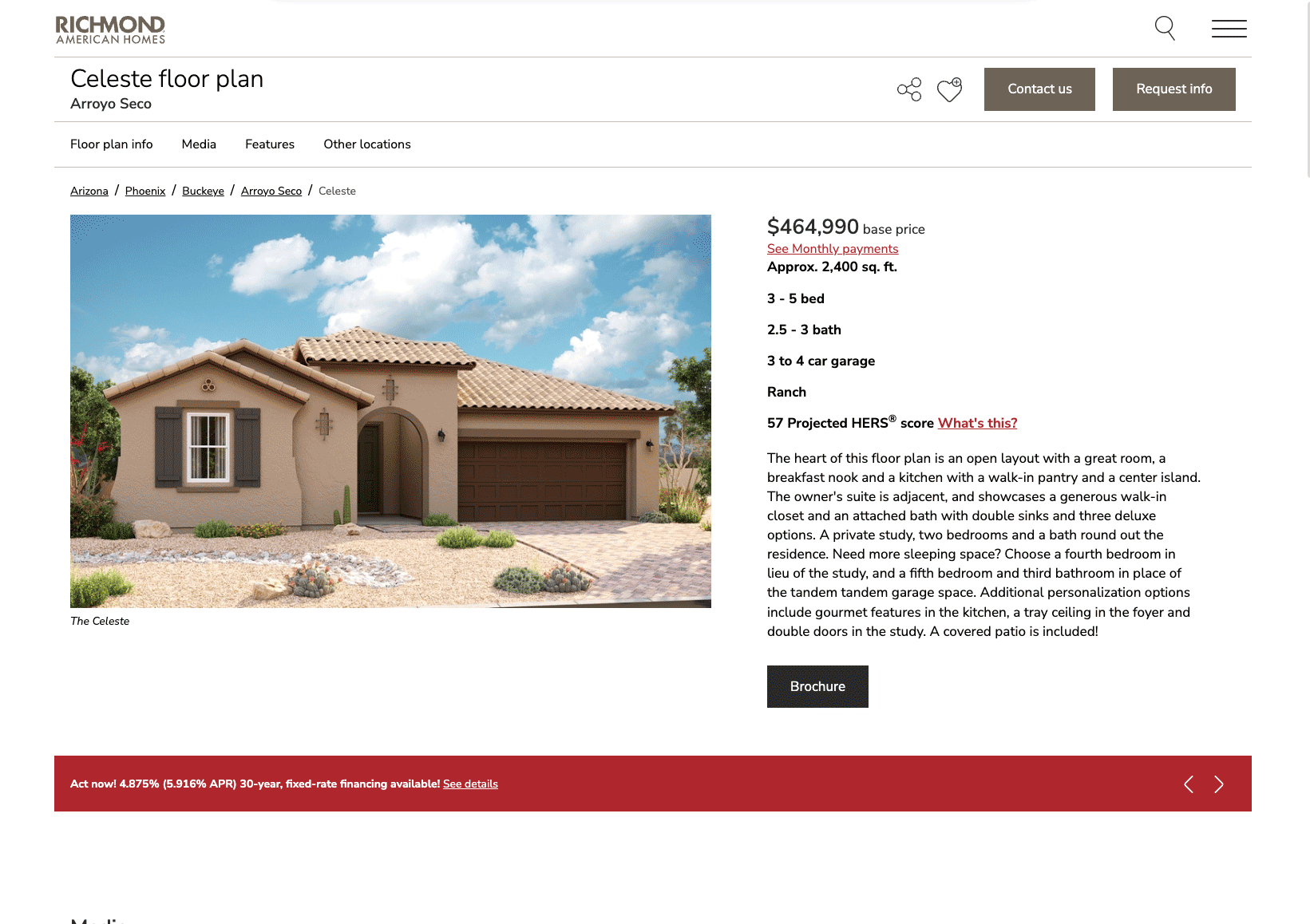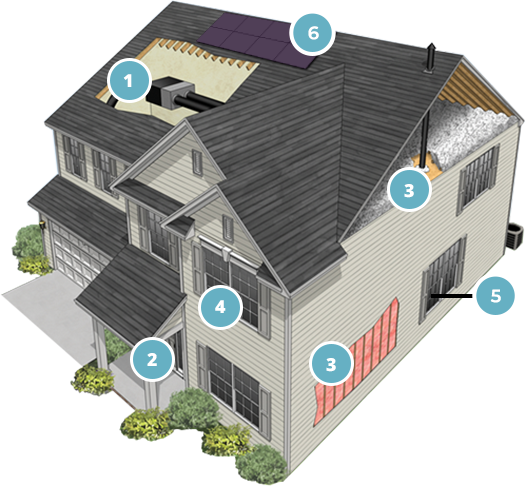
What's a HERS® rating?
HERS® stands for Home Energy Rating System. The HERS® index was created by RESNET® and it has become an industry standard for rating home energy efficiency.*
Session timed out. Reload to resume.

HERS® stands for Home Energy Rating System. The HERS® index was created by RESNET® and it has become an industry standard for rating home energy efficiency.*
Each 1-point decrease on the index is designed to correspond to a 1% reduction in energy consumption, compared to the baseline reference home (which has a score of 100).**
Example 1: A home scoring 70 on the HERS® Index is 30% more energy efficient than the reference home.
Example 2: According to RESNET®, the U.S. Department of Energy has determined a typical resale home has a HERS® rating of 130.*** That's 30% less energy efficient than the reference home.


Look for Projected Ratings on floor plans throughout our site or ask your sales associate for program details in your area.
Each new home built will also receive a Confirmed Rating—not just an estimate—provided by a Certified HERS® Rater. They'll perform on-site visual observations and tests for rated features following RESNET®/ANSI®/ICC® standards.
We make a point to offer features and options that help cut down on energy usage, reduce waste and create an efficient environment in your home. Some of these may include:
 Options and specifications may vary. Check your local Sales Center for details on what's available in your area.
Options and specifications may vary. Check your local Sales Center for details on what's available in your area.Check out this video from RESNET(R), then head over to hersindex.com for additional articles and resources to help you understand this powerful informational tool.
This material is presented for informational and illustrative purposes only.We're here to help you! Call 888.910.8055 with questions about HERS® ratings, our solar power program, ENERGY STAR® homes, Indoor airPLUS® and other ways we're helping homebuyers live greener.
* RESNET® has developed the HERS® index to indicate the comparative efficiencies of homes. It is no guarantee that energy efficiencies or cost savings will be achieved.
** A baseline reference home is a hypothetical home configured in accordance with the specifications set forth in the National Home Energy Rating Technical Guidelines for the purpose of calculating rating scores.
*** Average Home Energy Rating System Index for homes in the RESNET® (Residential Energy Services Network) Registry from January 2013 through December 2021.
The RESNET®, HERS®, ANSI® and ICC® are registered trademarks and are the property of their owners, who are not affiliated with, connected to or sponsored by the Richmond American Homes companies.